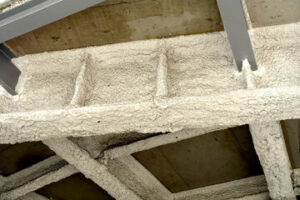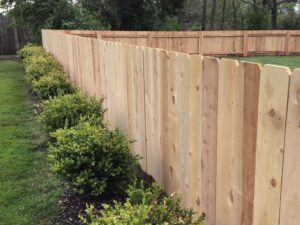Asbestos cement sheeting was used in eaves linings and roofs in many older homes. It has since been banned as it can cause lung cancer and mesothelioma.
Removing asbestos is a dangerous process and requires specialist skills. Some houses may be able to have their asbestos encapsulated rather than removed, though this can cost more. For your asbestos removal needs, click here at https://www.perthasbestosremovalwa.com.au/.

Ease Of Removal
Asbestos was a common component in many home construction materials until it was banned. It is highly effective in insulation and fire resistance, but it also releases tiny needle-like fibers that can cause serious health issues, including lung cancer, mesothelioma, and asbestosis. If you suspect that your eaves contain asbestos, it’s important to find a certified professional to inspect and remove the material. These professionals will wear protective clothing and a respirator while working to ensure your safety.
Asbestos can be removed from eaves using various methods, depending on the type of material and the condition of the structure. Non-friable material is typically easier to remove, as it doesn’t crumble easily. A professional can also use a vacuum to collect the material and dispose of it safely. Generally, the cost of removing asbestos is around $8 to $13 per square foot.
Before hiring an asbestos removal company, make sure to discuss the cost with them in advance. They may require you to pay for the rental of equipment, such as a respirator and bodysuit. They may also charge for labor, which can cost between $75 and $200 per crew member. This includes the time to prepare the area and remove the asbestos. It is important to find an asbestos removal specialist with a good reputation and a track record of providing excellent services at competitive prices.
It’s best to have any asbestos in your house tested before you start work. There are several different types of asbestos, and some are more hazardous than others. For example, crocidolite asbestos is known to cause a range of respiratory diseases and is usually found in attics and basements. It’s also the most dangerous because it is extremely fine, making it easy to inhale.
In some cases, it’s safer to repair than to remove asbestos. However, if the material is damaged or disturbed, it’s best to hire a professional to abate it. This will prevent the release of dangerous fibers into the air.
You should also consider having an asbestos abatement contractor install a negative pressure enclosure in your home before beginning the removal process. This will keep any loose fibers from escaping and contaminating the rest of your house.
Safety
Asbestos is a naturally occurring mineral that is very strong and heat resistant. It was used in many different building materials including pipe insulation, cement wallboard, and roofing materials. When asbestos products are broken or deteriorate they can release airborne asbestos fibers, which can be inhaled. This can lead to health problems including lung cancer, mesothelioma, and asbestosis. This means that when renovating your home or carrying out repairs you need to take care not to disturb asbestos products. It is also important to keep family members, pets, and neighbors away from the work area until the asbestos removal and clean-up have been completed.
Households that were built before 1990 may contain asbestos materials, particularly floor tiles, and asbestos-cement sheeting. While the presence of these products does pose a risk to households, they do not present a significant risk unless they are broken or disturbed. This can occur when drilling, cutting, or sanding the material, or when it is waterblasted by professional contractors. In most cases, householders will need to hire a professional contractor to remove or encapsulate these products.
Before starting any asbestos project, a professional should be licensed by the city’s Department of Health to perform testing and identification of the product. This person should have insurance that covers the cost of a removal and disposal project. Additionally, all workers should wear personal safety protection and follow decontamination procedures. It is recommended that the work area be sealed with plastic sheets and tape, and areas inside the house should be closed off from the work site.
When removing asbestos sheets, it is important to lower them to the ground and not drop them as this can cause breakage and release of asbestos fibers. It is also recommended that the sheets be carefully stacked and double-wrapped to avoid the needless release of fibers. Any unused material should be placed in heavy plastic bags and labeled as asbestos waste.
Before any asbestos is removed, it should be wetted down with water under low pressure to minimize dust and fiber release. This is especially important when working with nonfriable materials such as cement sheets. Once the work is complete, all surfaces within the containment area must be HEPA vacuumed and wiped down with wet wipes. In addition, all workers must shower and wash their clothes immediately after working with asbestos to remove any dust and fibers from their bodies that could later become airborne.
Costs
Asbestos removal costs can vary significantly depending on where the material is located and what type of asbestos it is. The more dangerous and difficult it is to remove, the higher the cost will be. In addition, the location of the asbestos can also affect the cost since it might require more specialized equipment and labor.
For example, crocidolite asbestos is much more expensive to remove than chrysotile asbestos. Crocidolite has thinner fibers and is more easily inhaled into the lungs, leading to serious health problems. It is more common in cement products and pipe insulation. Chrysotile, on the other hand, has thicker fibers and is less hazardous to remove.
The initial inspection and testing of the asbestos can be a significant portion of the overall cost. These fees typically run between $250 and $750. It is important to use a professional contractor who will perform this step and provide the necessary air monitoring. In addition, a secondary inspection is usually required to ensure that the job has been done correctly. This is normally performed by a different company to prevent a conflict of interest.
Once the area has been prepared, a decontamination enclosure is set up around the work area to reduce the spread of asbestos fibers. In addition, crew members will remove and dispose of any materials that contain asbestos. They will get the materials to reduce the release of airborne asbestos and will bag them for disposal. The material will then be transported to a hazmat landfill by special trucks.
Several factors can affect the cost of asbestos removal, including the size of the contaminated area, the type of asbestos, and whether the work is to be performed in a residential or commercial building. The cost can also be affected by the geographical location, as local regulations might have varying permits and disposal fees.
Another major factor is the number of workers and their wages, which can be costly for a project involving a large amount of asbestos. In addition to the labor costs, there are additional expenses related to the transportation and disposal of the asbestos waste.
Environmental Impact
Asbestos is a group of fibrous minerals that were widely used in building products until the mid-1980s. It was found in insulation, attic and wall linings, hot water pipes, insulating boards, and heat-resistant fabrics. Exposure to these materials over long periods can cause lung damage and cancer. However, the fibers are not harmful when encased and sealed with other materials. Asbestos can only be harmful when the material is released into the air and inhaled. Therefore, homeowners should never attempt to remove asbestos themselves.
Homeowners should have their homes inspected by an inspector who can provide a detailed report on the presence of asbestos and recommendations for corrective measures. The inspector can also perform checks after removal or repairs to ensure that the work has been completed properly.
Before hiring an abatement contractor, homeowners should shop around to find the best rates and check references. If possible, homeowners should choose a contractor who has previously worked on homes that are similar to theirs. This will help ensure that the contractor knows how to safely remove asbestos and not release it into the air.
It is essential to follow the proper procedures when removing asbestos cement sheeting from eaves. The contractor should use containment and wetting to minimize the release of asbestos fibers into the air during work, clean-up, and disposal activities. They should also wear protective clothing and a good quality HEPA or organic vapor mask when working with asbestos. It is also important to keep household members, visitors, and pets away from the work area until the clean-up is complete.
When removing the asbestos, contractors should lower it rather than pull it to minimize breakage and dust. They should also be sure to wet the asbestos to make it less brittle. The contractor should also take care to not spray dust into other parts of the house and should cover surfaces that are not part of the work area with plastic sheets. It is also important not to work with asbestos on a windy day.
The contractor should also ensure that the asbestos is taken to a licensed landfill for disposal. This will reduce the likelihood of asbestos contaminating groundwater or soil. In addition, the contractor should keep a record of all asbestos removed to comply with state and federal regulations.

